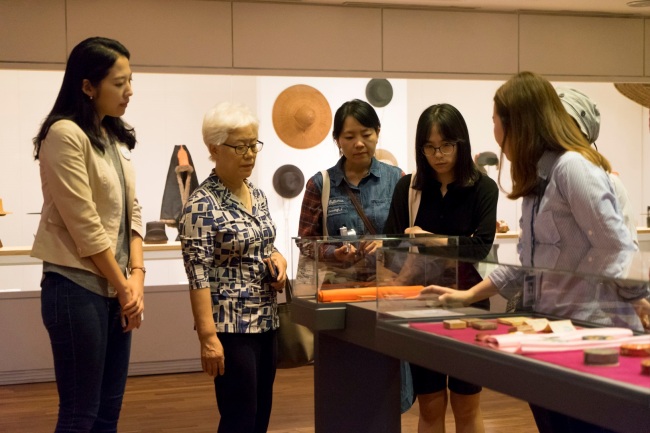[Herald Interview] ‘Communication is key in enjoying public art’
By Kim Da-solPublished : Oct. 3, 2016 - 17:02
Seo Ji-eun, 30, curator at Coreana Museum of Art in Gangnam, is one of the supervising curators for some 100 Seoul residents who are participating in a two-month-long municipal citizen program to uncover public art on the city’s streets.
Under the Seoul Metropolitan Government’s project “Art on Seoul’s streets found by citizens,” participants find and promote lesser-known public art and landmarks in groups of 10, joined by field experts and art connoisseurs.
After a five-year career as a curator working overseas, Seo expressed surprise at how other cities, like New York in the US, were operating institutions to support and study public art, such as the Public Art Fund and Creative Time.
Under the Seoul Metropolitan Government’s project “Art on Seoul’s streets found by citizens,” participants find and promote lesser-known public art and landmarks in groups of 10, joined by field experts and art connoisseurs.
After a five-year career as a curator working overseas, Seo expressed surprise at how other cities, like New York in the US, were operating institutions to support and study public art, such as the Public Art Fund and Creative Time.

“These institutions even work in collaboration with renowned museums such as Solomon R. Guggenheim Museum, discussing and bringing public art to a different level, much unlike Seoul where governmental institutions run public art projects from time to time,” Seo told The Korea Herald.
Seo added that communication between art itself and citizens should be the key when planning and presenting public art.
As such an example, the curator referred to the Weather Project, held by Danish artist Olafur Eliasson at the Tate Modern London in 2003. In the experimental exhibition, Eliasson installed a giant sun with light bulbs within an empty space where viewers could lie down and enjoy sunbathing -- a way to describe how the weather shapes a city.
“I personally think that public art does not necessarily have to be in a certain format. Experience should come first before art format. The main role of public art should be about giving good experience to viewers,” Seo said.

Another curator, Kwon Yun-hee, 38, an artist manager at Artist Pension Trust, stressed the importance of communication between artists, curators and citizens in order to understand and share diverse opinions.
“After having a conversation with citizens (through this project), I also came to break my own perception toward public art. (Communicating with citizens) worked as a stimulant and a motivation for me to broaden my viewpoint working in this field,” said Kwon.
“As citizens are the main target of public art, their participation in enjoying public art can have a huge impact to all stages of it, ranging from planning public art to installation, follow up management and assessment of public art in the future.“
Kim Hyun-ji, 39, a freelance curator based in Seoul, said that the current art culture should be able to invite a wide range of people, from young children to elders, in order to provide them with memorable experiences of enjoying pubic art.
“Museums in different countries allow for a freer way of watching art and participating in cultural programs. For example, school children could be allowed to sit down at the corner of the exhibition hall and draw a sketch, as long as they do not disturb other viewers’ watching,” said Kim.
With the average age of art appreciators on a constant fall, efforts to provide programs for young viewers will widen the public’s access to art, according to Kim.
“That way, public art will not only spread out to various cities other than Seoul, but also attract the attention and focus of all age groups,” she said.
By Kim Da-sol(ddd@heraldcorp.com)









![[Kim Seong-kon] Democracy and the future of South Korea](http://res.heraldm.com/phpwas/restmb_idxmake.php?idx=644&simg=/content/image/2024/04/16/20240416050802_0.jpg&u=)








![[KH Explains] Hyundai's full hybrid edge to pay off amid slow transition to pure EVs](http://res.heraldm.com/phpwas/restmb_idxmake.php?idx=652&simg=/content/image/2024/04/18/20240418050645_0.jpg&u=20240418181020)

![[Today’s K-pop] Zico drops snippet of collaboration with Jennie](http://res.heraldm.com/phpwas/restmb_idxmake.php?idx=642&simg=/content/image/2024/04/18/20240418050702_0.jpg&u=)